Grow Eggplants at Home? Absolutely! Imagine stepping into your backyard and harvesting plump, glossy eggplants, ready to be transformed into delicious meals. Forget those bland, overpriced eggplants from the grocery store. With a few simple tricks and a little DIY spirit, you can cultivate your own thriving eggplant patch, bursting with flavor and freshness.
Eggplants, also known as aubergines, have a rich history, dating back thousands of years to ancient Asia. They were initially cultivated for medicinal purposes before becoming a culinary staple in various cultures around the world. From the Mediterranean’s moussaka to Asia’s stir-fries, eggplants have proven their versatility and deliciousness.
But why should you bother to grow eggplants at home? Well, for starters, homegrown produce simply tastes better! Plus, you have complete control over the growing process, ensuring your eggplants are free from harmful pesticides and chemicals. More importantly, growing your own food is incredibly rewarding and therapeutic. It connects you to nature, reduces your carbon footprint, and provides you with a sense of accomplishment. In this article, I’ll share my favorite DIY hacks and tips to help you successfully grow eggplants at home, even if you have limited space or experience. Get ready to unleash your inner gardener and enjoy the satisfaction of harvesting your own delicious eggplants!
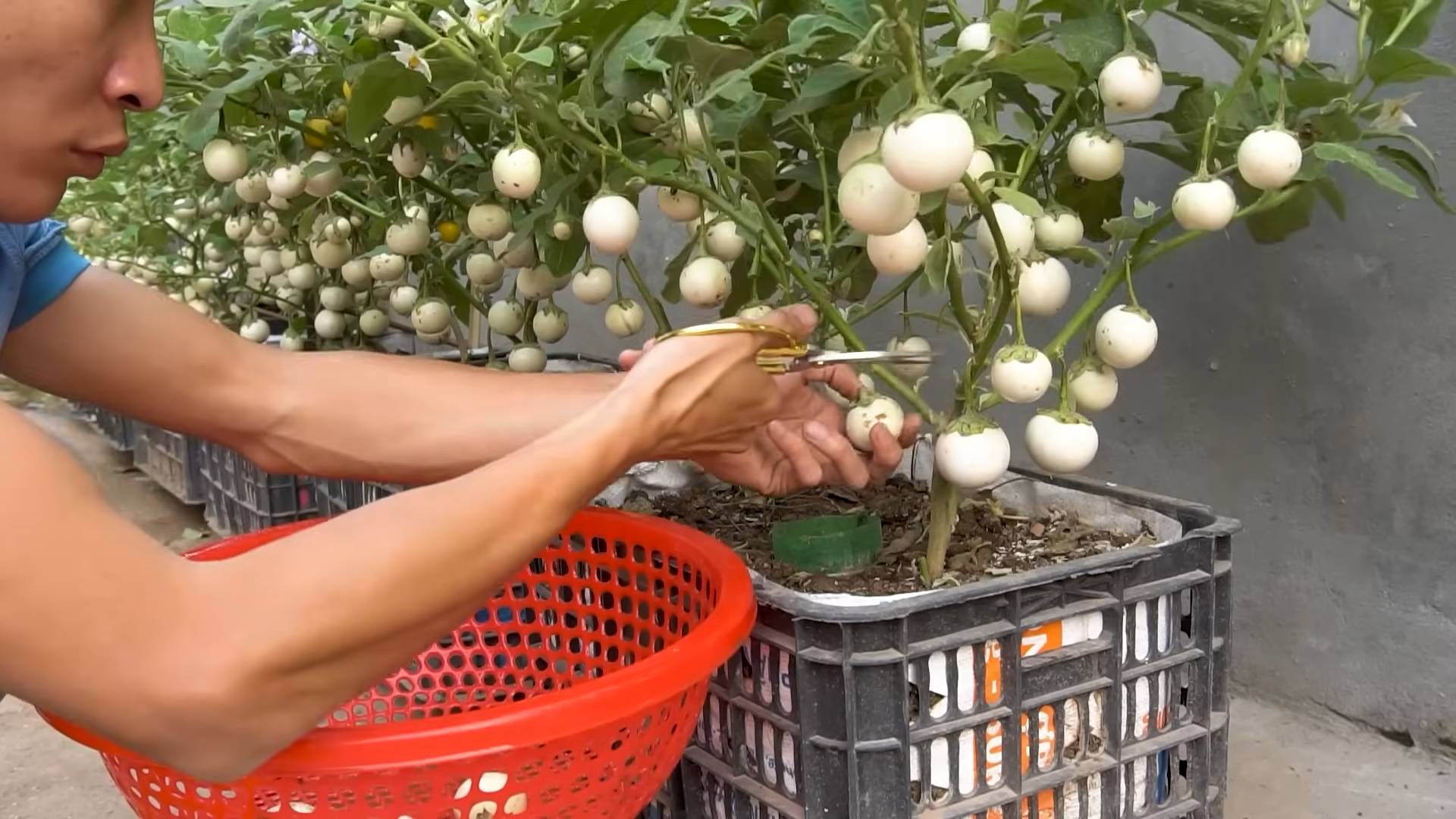
Growing Eggplants at Home: A DIY Guide for Bountiful Harvests
Hey there, fellow gardening enthusiasts! I’m so excited to share my experiences and tips on growing eggplants right in your own backyard (or even in containers!). Eggplants, with their glossy, vibrant fruits, can add a touch of elegance and deliciousness to your garden and kitchen. While they might seem a bit intimidating at first, trust me, with a little know-how and some TLC, you can enjoy a fantastic eggplant harvest. Let’s dive in!
Choosing the Right Eggplant Variety
Before we get our hands dirty, it’s crucial to pick the right eggplant variety for your climate and space. There are so many amazing options out there!
* **For warmer climates:** ‘Black Beauty’ is a classic, reliable choice. ‘Ichiban’ is another great option, producing long, slender fruits.
* **For cooler climates:** ‘Early Long Purple’ matures quickly, making it ideal for shorter growing seasons. ‘Little Fingers’ is another good bet, offering smaller, bite-sized eggplants.
* **For container gardening:** ‘Patio Baby’ and ‘Hansel’ are compact varieties that thrive in pots.
Consider the size of your garden and the type of eggplant you prefer (globe, long, oval, etc.) when making your selection. I personally love growing ‘Black Beauty’ because of its classic flavor and versatility.
Starting Eggplants from Seed (Optional, but Recommended!)
While you can buy eggplant seedlings from a nursery, starting them from seed gives you more control over the process and allows you to choose from a wider variety of options. I always prefer starting from seed!
* **When to start:** Eggplants need a long growing season (60-90 days), so start your seeds indoors 8-10 weeks before the last expected frost.
* **What you’ll need:** Seed starting trays or small pots, seed starting mix, a heat mat (optional but helpful), and a grow light (also optional but highly recommended).
**Step-by-Step Instructions:**
1. **Prepare your seed starting containers:** Fill your trays or pots with seed starting mix. Gently moisten the mix with water.
2. **Sow the seeds:** Plant 2-3 seeds per cell or pot, about ¼ inch deep.
3. **Provide warmth:** Place the trays on a heat mat if you have one. Eggplants germinate best at temperatures between 75-85°F (24-29°C).
4. **Provide light:** Place the trays under a grow light or in a sunny window. If using a window, rotate the trays regularly to prevent the seedlings from leaning towards the light.
5. **Keep the soil moist:** Water the seedlings regularly, keeping the soil consistently moist but not soggy.
6. **Thin the seedlings:** Once the seedlings have their first true leaves (the second set of leaves), thin them to one plant per cell or pot. Choose the strongest, healthiest-looking seedling.
7. **Harden off the seedlings:** About a week before transplanting, gradually acclimate the seedlings to outdoor conditions. Start by placing them outside for an hour or two each day, increasing the time each day. This will help them adjust to the sun, wind, and temperature changes.
Preparing the Garden Bed or Container
Eggplants need a sunny spot with well-drained soil. They’re also heavy feeders, so enriching the soil with compost or aged manure is essential.
* **Sunlight:** Choose a location that receives at least 6-8 hours of direct sunlight per day.
* **Soil:** Eggplants prefer well-drained, fertile soil with a pH of 6.0-7.0.
* **Amendment:** Amend the soil with plenty of compost or aged manure to improve drainage and fertility. I usually add a generous amount of both!
* **Container size:** If growing in containers, choose pots that are at least 12 inches in diameter and depth.
**Step-by-Step Instructions:**
1. **Clear the area:** Remove any weeds, rocks, or debris from the planting area.
2. **Amend the soil:** Dig in a generous amount of compost or aged manure. Aim for a ratio of about 1 part compost/manure to 3 parts soil.
3. **Test the soil pH (optional):** If you’re unsure about your soil pH, you can purchase a soil testing kit from your local garden center. Adjust the pH as needed using lime (to raise the pH) or sulfur (to lower the pH).
4. **Create raised beds (optional):** Raised beds can improve drainage and warm up the soil more quickly in the spring.
Transplanting the Eggplant Seedlings
Once the danger of frost has passed and the soil has warmed up, it’s time to transplant your eggplant seedlings into the garden or containers.
* **Timing:** Transplant in the late afternoon or on a cloudy day to minimize stress on the seedlings.
* **Spacing:** Space the plants 18-24 inches apart in rows that are 24-36 inches apart. For container gardening, plant one eggplant per pot.
**Step-by-Step Instructions:**
1. **Water the seedlings:** Water the seedlings thoroughly before transplanting.
2. **Dig the holes:** Dig holes that are slightly larger than the root balls of the seedlings.
3. **Remove the seedlings from their containers:** Gently remove the seedlings from their containers, being careful not to damage the roots.
4. **Place the seedlings in the holes:** Place the seedlings in the holes, making sure the top of the root ball is level with the surrounding soil.
5. **Fill in the holes:** Fill in the holes with soil, gently firming it around the base of the plants.
6. **Water thoroughly:** Water the newly transplanted seedlings thoroughly.
7. **Mulch (optional):** Apply a layer of mulch around the plants to help retain moisture, suppress weeds, and regulate soil temperature. I like to use straw or shredded leaves.
Caring for Your Eggplant Plants
Once your eggplants are in the ground, it’s important to provide them with the care they need to thrive.
* **Watering:** Water regularly, especially during hot, dry weather. Eggplants need consistent moisture to produce good fruit. Aim for about 1 inch of water per week.
* **Fertilizing:** Fertilize every 2-3 weeks with a balanced fertilizer. You can also use a liquid seaweed fertilizer for an extra boost. I find that eggplants are hungry plants!
* **Staking:** As the plants grow and the fruits develop, they may need to be staked to prevent them from falling over. Use sturdy stakes and tie the plants loosely to the stakes with twine.
* **Pruning:** Prune off any suckers (small shoots that grow from the base of the plant) to encourage more fruit production.
* **Pest control:** Keep an eye out for pests such as aphids, flea beetles, and tomato hornworms. Handpick any pests you find or use an organic insecticide if necessary. I prefer using neem oil for pest control.
* **Weed control:** Keep the area around the plants free of weeds. Weeds compete with the eggplants for water and nutrients.
Harvesting Your Eggplants
The moment you’ve been waiting for! Harvesting your eggplants at the right time is crucial for optimal flavor and texture.
* **When to harvest:** Harvest the eggplants when they are glossy, firm, and have reached their mature size. The skin should be smooth and unblemished. Gently press the skin with your thumb; if it springs back, the eggplant is ready to harvest.
* **How to harvest:** Use a sharp knife or pruning shears to cut the eggplant from the plant, leaving about an inch of stem attached.
**Step-by-Step Instructions:**
1. **Inspect the eggplants:** Check the eggplants regularly for signs of ripeness.
2. **Cut the stem:** Use a sharp knife or pruning shears to cut the stem about an inch above the fruit.
3. **Handle with care:** Handle the eggplants gently to avoid bruising them.
4. **Store properly:** Store the eggplants in the refrigerator for up to a week.
Troubleshooting Common Eggplant Problems
Even with the best care, you might encounter some problems along the way. Here are a few common issues and how to address them:
* **Blossom-end rot:** This is caused by a calcium deficiency. Ensure consistent watering and add calcium to the soil.
* **Poor fruit set:** This can be caused by cool temperatures or lack of pollination. Hand-pollinate the flowers if necessary.
* **Pest infestations:** Regularly inspect your plants for pests and take action promptly.
Enjoying Your Homegrown Eggplants
Congratulations! You’ve successfully grown your own eggplants. Now it’s time to enjoy the fruits (or vegetables!) of your labor. Eggplants are incredibly versatile and can be used in a variety of dishes, from eggplant parmesan to baba ghanoush. I love grilling them with a little olive oil and herbs.
Growing eggplants
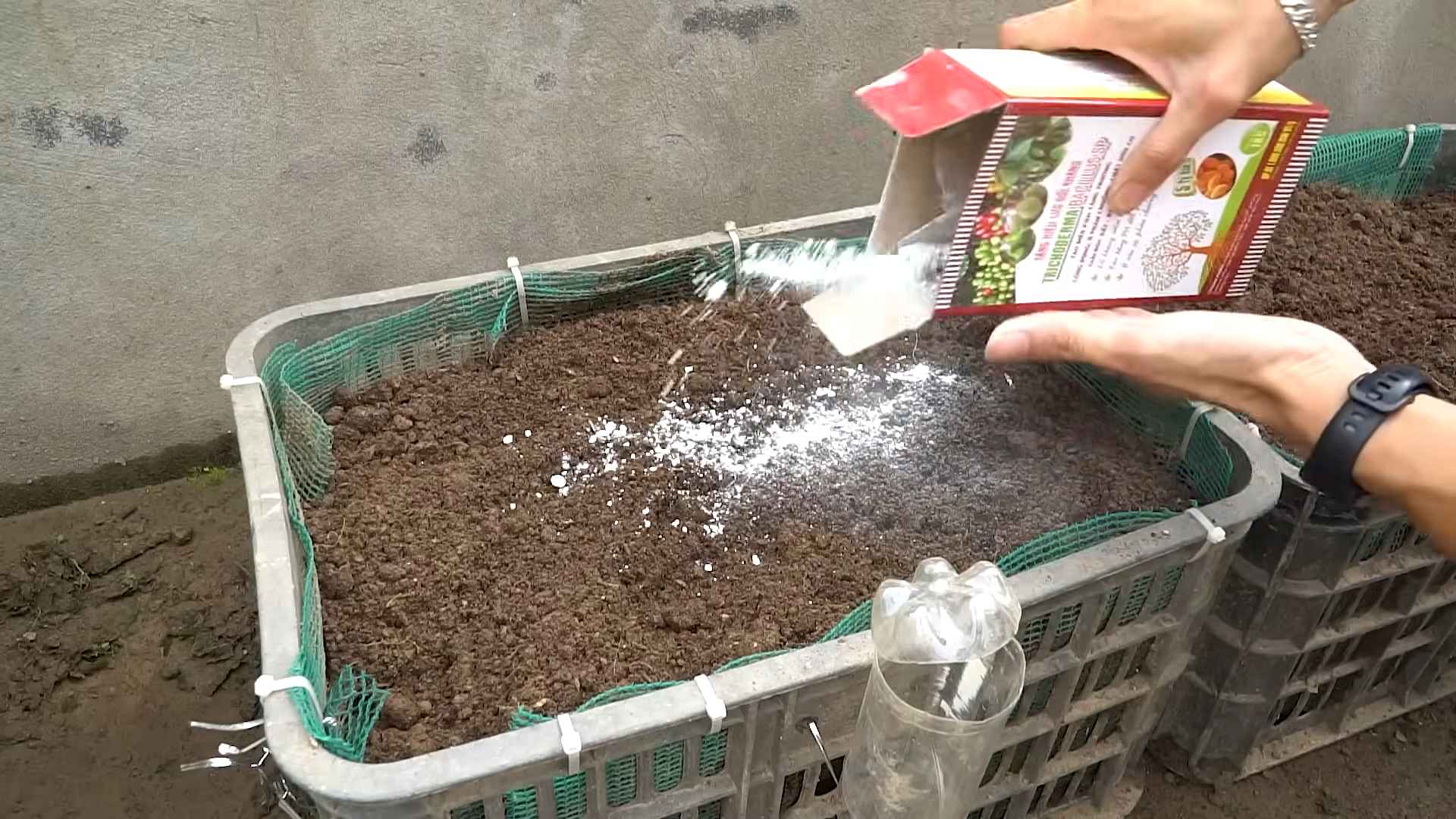
Conclusion
So, there you have it! Growing eggplants at home, while it might seem daunting at first, is incredibly rewarding and achievable with a little know-how and dedication. We’ve walked you through the essential steps, from selecting the right variety and starting seeds indoors to transplanting, providing optimal care, and finally, harvesting your delicious, homegrown bounty.
But why should you bother with the effort? The answer is simple: the taste! There’s simply no comparison between a store-bought eggplant and one that’s been nurtured in your own garden, bursting with fresh, vibrant flavor. Plus, you have complete control over the growing process, ensuring that your eggplants are free from harmful pesticides and chemicals. You’re not just growing food; you’re cultivating a healthier lifestyle.
Beyond the superior taste and health benefits, growing your own eggplants offers a unique connection to nature. Witnessing the entire life cycle of a plant, from tiny seed to mature fruit, is a deeply satisfying experience. It’s a chance to slow down, connect with the earth, and appreciate the simple pleasures of life.
And don’t be afraid to experiment! Once you’ve mastered the basics, there are countless variations you can try. Consider exploring different eggplant varieties, each with its own unique flavor and appearance. From the classic globe eggplant to the slender Japanese eggplant and the vibrant Thai eggplant, the possibilities are endless. You can also experiment with different growing techniques, such as container gardening or vertical gardening, to maximize your space and create a visually stunning display.
Furthermore, think about companion planting. Basil, thyme, and marigolds are excellent companions for eggplants, helping to deter pests and attract beneficial insects. Not only will this protect your plants, but it will also enhance the overall health and biodiversity of your garden.
Growing eggplants at home is more than just a gardening project; it’s an investment in your health, your well-being, and your connection to the natural world. It’s a chance to learn new skills, challenge yourself, and reap the delicious rewards of your labor.
We encourage you to take the plunge and give it a try. Start small, be patient, and don’t be afraid to make mistakes. Gardening is a learning process, and every season brings new opportunities to improve your skills.
And most importantly, we want to hear about your experience! Share your tips, tricks, and triumphs in the comments below. Let us know what varieties you’re growing, what challenges you’ve faced, and what delicious dishes you’ve created with your homegrown eggplants. Together, we can create a thriving community of eggplant enthusiasts and inspire others to discover the joys of growing their own food. So, get your hands dirty, embrace the challenge, and enjoy the delicious rewards of growing eggplants at home!
Frequently Asked Questions (FAQ)
Q: What is the best time to start eggplant seeds indoors?
A: The ideal time to start eggplant seeds indoors is typically 6-8 weeks before the last expected frost in your area. This allows the seedlings to develop a strong root system before being transplanted outdoors. Check your local frost dates to determine the appropriate timing for your region. You can usually find this information from your local agricultural extension office or online weather resources. Starting seeds indoors gives them a head start, as eggplants require a long growing season.
Q: How much sunlight do eggplants need?
A: Eggplants are sun-loving plants and require at least 6-8 hours of direct sunlight per day to thrive. Insufficient sunlight can lead to leggy growth, reduced fruit production, and increased susceptibility to pests and diseases. Choose a planting location that receives full sun throughout the day. If you’re growing eggplants in containers, make sure to position them in a sunny spot or supplement with grow lights if necessary.
Q: What kind of soil is best for growing eggplants?
A: Eggplants prefer well-drained, fertile soil that is rich in organic matter. The ideal soil pH is between 6.0 and 6.8. Before planting, amend the soil with compost, aged manure, or other organic materials to improve drainage, fertility, and water retention. Avoid heavy clay soils, as they can become waterlogged and inhibit root growth. If you have clay soil, consider growing eggplants in raised beds or containers with a well-draining potting mix.
Q: How often should I water my eggplants?
A: Eggplants need consistent moisture, especially during hot weather and fruit development. Water deeply and regularly, aiming to keep the soil consistently moist but not waterlogged. Check the soil moisture level regularly by sticking your finger about an inch into the soil. If the soil feels dry, it’s time to water. Avoid overhead watering, as it can promote fungal diseases. Instead, water at the base of the plant, using a soaker hose or drip irrigation system. Mulching around the plants can also help to retain moisture and suppress weeds.
Q: What are some common pests and diseases that affect eggplants?
A: Eggplants are susceptible to several pests and diseases, including aphids, flea beetles, spider mites, blossom-end rot, and fungal diseases like verticillium wilt and fusarium wilt. Regularly inspect your plants for signs of pests or diseases. Use organic pest control methods, such as insecticidal soap or neem oil, to control infestations. To prevent diseases, ensure good air circulation, avoid overhead watering, and practice crop rotation. Choose disease-resistant varieties whenever possible. Blossom-end rot, caused by calcium deficiency, can be prevented by maintaining consistent soil moisture and adding calcium to the soil if needed.
Q: How do I know when my eggplants are ready to harvest?
A: Eggplants are typically ready to harvest when they are firm, glossy, and have reached their mature size and color, which varies depending on the variety. Gently press the skin of the eggplant; it should feel firm but slightly yielding. Overripe eggplants will become dull, soft, and seedy. Use a sharp knife or pruning shears to cut the eggplant from the plant, leaving a short stem attached. Harvest eggplants regularly to encourage continued fruit production.
Q: Can I grow eggplants in containers?
A: Yes, eggplants can be successfully grown in containers, making them a great option for gardeners with limited space. Choose a large container, at least 12-18 inches in diameter, to accommodate the plant’s root system. Use a well-draining potting mix and ensure that the container has drainage holes. Provide adequate sunlight and water regularly. Container-grown eggplants may require more frequent fertilization than those grown in the ground. Consider using a balanced, slow-release fertilizer or liquid fertilizer every few weeks.
Q: What are some good companion plants for eggplants?
A: Companion planting can benefit eggplants by deterring pests, attracting beneficial insects, and improving soil health. Some good companion plants for eggplants include basil, thyme, marigolds, peppers, and beans. Basil helps to repel aphids and whiteflies, while marigolds deter nematodes and other soil pests. Peppers and beans can also help to improve soil fertility. Avoid planting eggplants near fennel, as it can inhibit their growth.
Q: How can I prevent blossom-end rot in my eggplants?
A: Blossom-end rot is a common problem in eggplants, caused by calcium deficiency. To prevent it, ensure that your soil has adequate calcium levels. You can amend the soil with lime or bone meal before planting. Maintain consistent soil moisture, as fluctuations in watering can interfere with calcium uptake. Avoid over-fertilizing with nitrogen, as it can also inhibit calcium absorption. If you notice blossom-end rot developing, you can apply a calcium foliar spray to the affected plants.

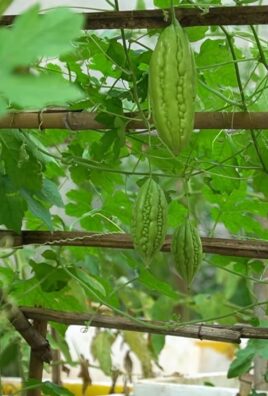
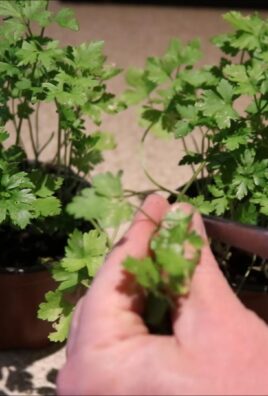
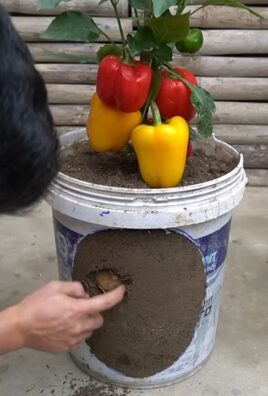
Leave a Comment